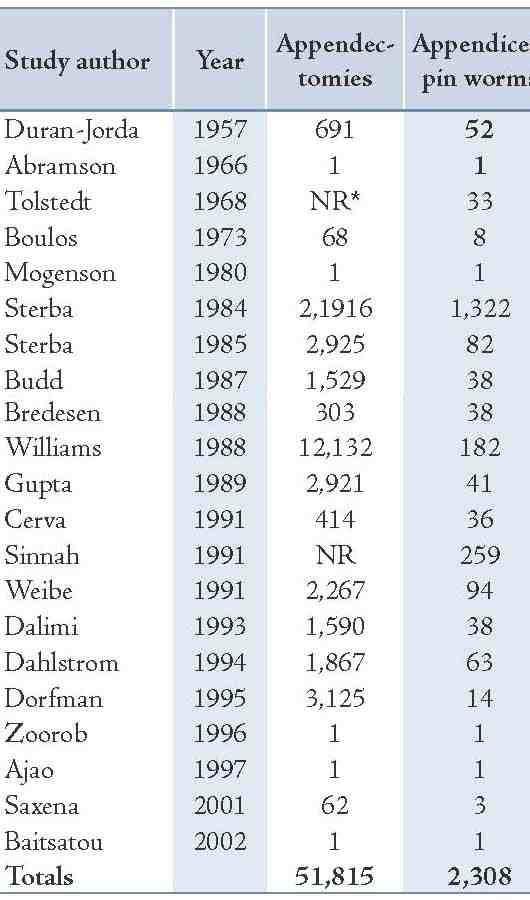| |
Visiting Professor, Hainan Medical University, China; Visiting Professor, Faculty of Medicine, University of Nis, Serbia; Adjunct Professor, Joseph Ayobabalola University, Nigeria; Professor Viroj Wiwanitkit Wiwanitkit House, Bangkhae, Bangkok, Thailand 10160.
Received: 08 Oct 2013 Accepted: 11 Oct 2013
*Address correspondence and reprints request to: Viroj Wiwanitkit, Visiting Professor, Hainan Medical University, China; Visiting Professor, Faculty of Medicine, University of Nis, Serbia; Adjunct Professor, Joseph Ayobabalola University, Nigeria; Professor Viroj Wiwanitkit Wiwanitkit House, Bangkhae, Bangkok, Thailand 10160. E-mail: wviroj@yahoo.com |
|
| |
To the Editor
The recent report on parasitic appendicitis is very interesting.1 Zakaria et al. reported that "The low prevalence of parasites among the appendectomy specimens did not support the notion that parasites were a major cause of appendicitis in pediatric patients."1 Indeed, the parasitic infestation can be a cause of appendicitis. There are limited reports on the prevalence of parasitic appendicitis. The reported prevalence rates vary among different settings. In fact, Zakaria et al included in Table 5 a literature review of cases of "appendiceal enterobius infections" reported in the literature in their original paper.1 Based on the mentioned table, most reports are from non-tropical non-endemic Western countries, therefore, the reported rates seem to be low.1 However, it should be noted that the data in the mentioned table included both groups with and without inflammation of the appendix. At this point, the important concern is about the infection rate in endemic versus non-endemic regions. If the prevalence in the report by Zakarreia et al. is actually low,1 it should be comparatively lower than or similar to the rates in the reports from the tropical endemic countries. Here, at least two other rates in the literature that happen to be lower than that described by Zakarreia et al. could be seen and are hereby given as examples.
In the first study from Turkey, the significantly lower prevalence rate of 0.5% was reported.2 Of interest, the observed prevalence rate in the present study (5.5%) is also higher than that of the previous report from a tropical country, Brazil (1.5%).3 In fact, parasitic infestation should not be high in Oman. The underlying factor contributing to a rather high prevalence rate of parasitic infestation should be further assessed. Nevertheless, some common facts can be seen from the present and previous reports. Focusing on the type of parasite, Enterobius spp. is usually the most common worm seen in almost all reports.1-4
Table 5: Literature review of appendiceal enterobius infections.1

References
1. Zakaria OM, Zakaria HM, Daoud MY, Al Wadaani H, Al Buali W, Al-Mohammed H, et al. Parasitic infestation in pediatric and adolescent appendicitis: a local experience. Oman Med J 2013 Mar;28(2):92-96.
2. Karatepe O, Adas G, Tukenmez M, Battal M, Altiok M, Karahan S. Parasitic infestation as cause of acute appendicitis. G Chir 2009 Oct;30(10):426-428.
3. da Silva DF, da Silva RJ, da Silva MG, Sartorelli AC, Rodrigues MA. Parasitic infection of the appendix as a cause of acute appendicitis. Parasitol Res 2007 Dec;102(1):99-102.
4. Silva DF, Silva RJ, Silva MG, Sartorelli AC, Takegawa BK, Rodrigues MA. [Parasitic infection of the appendix and its possible relationship to acute appendicitis]. Arq Gastroenterol 2008 Apr-Jun;45(2):166-168.
|